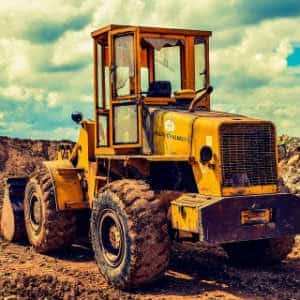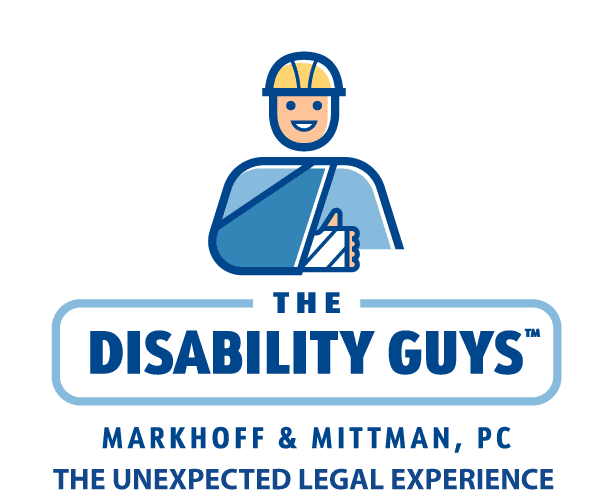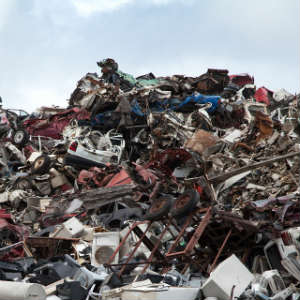While it may seem like scrap yards are just heaping piles of junk and trash, the reality is that these businesses are part of the recycling process. These companies will buy scrap metal by the pound or ton and then break it down and organize it into sections based on the type of metal. Then that metal will be sold to a specific refinery.
The work process at a scrap metal yard can be broken down into basic areas:
- Loading and unloading.
- Breaking and separating of materials.
- Non-gas torch cutting.
- Gas torch cutting.
- Applying chemical processes to metals.
- Placing metal in furnaces to be melted.
- Bailing and Compacting.
Each of these areas is full of dangers and even with protective gear such as hard hats, gloves, work boots, and safety glasses, accidents cause injuries to employees every single day.
Common Causes Of Injury & Illness In Scrap Yards
According to the Occupational Safety & Health Administration, the following are the most common causes of illness and injury in scrap yard employees:
Lead Exposure
As recyclable materials are cut, crushed, burned, or melted, lead can be released into the air. If an employee breathes this in, it can build up in the body over months and years, causing hearing loss, seizures, brain damage, and GI issues. Lead poisoning can also be fatal.
OSHA has determined an acceptable exposure limit for employees and a list of preventative and safety measure to help with lead exposure can be found here.
Slip & Falls
With so many items around, it’s easy for an employee to lose their footing and take a tumble. It’s equally as easy to fall on top of those items, which are typically hard and sharp. This can cause a spinal injury, head trauma, a broken bone, a deep laceration, or a puncture wound.
Explosions
Anytime that heat and open flame are around, an explosion may occur. While it might seem odd to think of metal yards have explosions, poorly maintained furnaces and certain metal dust can create a highly combustible environment.
Unexpected Machine Startup
When working with heavy machinery, like the large machines that crush metal into compact units that can then be transported, OSHA requires “lockout/tagout” procedures to be followed so that employees aren’t caught between gears or moving parts when it unexpectedly starts up again. If an employee is caught, they risk sustaining crush injuries, lacerations, and amputations to any part of the body.
Heavy Lifting
Lifting heavy objects is one of the leading causes of musculoskeletal injuries in nearly every industry.
Loading & Unloading Traffic Accidents
Large loads are typically moved with bulldozers and forklifts and according to OSHA, the collection process is one of the most dangerous in the industry. Every year, workers are seriously injured and killed when the drivers of these heavy machines accidentally back over or run over a coworker.
This exact situation is what occurred in June of 2017, which a 49-year-old man working at a scrap yard in Oswego, NY lost his life.
Front End Loader Hits Oswego, NY Employee
It was a typical day at Ben Weitsman & Sons scrap yard and everything was going smoothly – until about 2:30 p.m.
Michael T. Burke, a 49-year-old worker who had been with the company for several years, was in the yard when the unthinkable happened. Another worker who was driving a front-end loader didn’t see him and run and him over.
Emergency crews were called immediately but his wounds were too extensive and he passed away at the scene.
Ongoing Investigation Ordered
OSHA, the New York State Police, and the local Oswego police will be continuing to investigate the accident. This isn’t unusual – any time that someone dies in the workplace, an investigation into the accident is performed to 
If it is discovered that the worker’s employer failed to use the proper safety precautions, they could face heavy fines and stop work orders. In some cases, if the violation of safety procedures is clearly willful, employers can face criminal charges, like the construction company that was charged with manslaughter after a wall collapse killed an 18-year-old employee.
While the investigation continues, the poor victim has a family that has been left behind to deal with the aftermath of his unexpected death.
Workers’ Compensation Benefits Help Grieving Families
Most New Yorkers are aware of the fact that workers’ compensation insurance provides payments to employees who have been hurt on the job but they don’t realize that if the injured worker dies, their surviving loved ones may be entitled to death benefits.
These benefits are typically available for the children and spouses of the worker who passed, although it may be possible for other family members who were living with and dependent upon the worker to file. The benefits come as a regular weekly or monthly payment and are based on the deceased’s salary at the time of their death. For spouses, these payments will continue until their death or until they remarry. Children usually only collect until they turn 18-years-old.
These benefits are supposed to help keep the surviving loved ones financially stable. It’s difficult enough to unexpectedly lose a loved one, no one should have to struggle to survive due to the loss of a contributing family member’s salary.
There are very strict timelines when it comes to filing for these benefits and the application process can be difficult. This is where the help of an experienced attorney may be invaluable.
The Disability Guys Can Help
Since 1933 the team of dedicated attorneys at Markhoff & Mittman, also known as The Disability Guys, has been helping injured workers and their families. We know that by the time you contact us you are already under an extraordinary amount of stress. Our goal is to get you the compensation you need to reduce that stress.
We assist our clients by:
- Helping to fill out claim forms and checking for errors.
- Speaking with the insurance company.
- Reviewing the accident and working to collect evidence to support the claim.
- Handling the appeals process.
- Presenting the necessary information during a hearing before a workers’ compensation judge or board.
Despite the fact that workers’ compensation is “no-fault”, which means that even if the employee’s own actions contributed to their accident the policy should cover their medical expenses, a fraction of lost wages, and death benefits, a large percentage of claims are denied every single year.
Common reasons for denials include a mistake made on the claim form, medical records that don’t provide enough information to support the claim, or an employer that is contesting the claim.
How Quickly Does A Claim Need To Be Filed?
After seeking medical attention and getting the necessary care, a notification of injury should be provided to the employer within 30 days of the injury. This is an often overlooked part of the claim process but an important one. Then, a claim should be filed with the NY Workers’ Compensation Board by filing out Form C-3. While this can be within two years, the sooner it is filed the better.
While many of our clients come to us after they’ve received a denial, our firm is ready to help injured workers as soon as they’ve been injured. In fact, research has shown that employees working with an attorney are much more likely to have their initial claim approved and to recover payment quickly.

